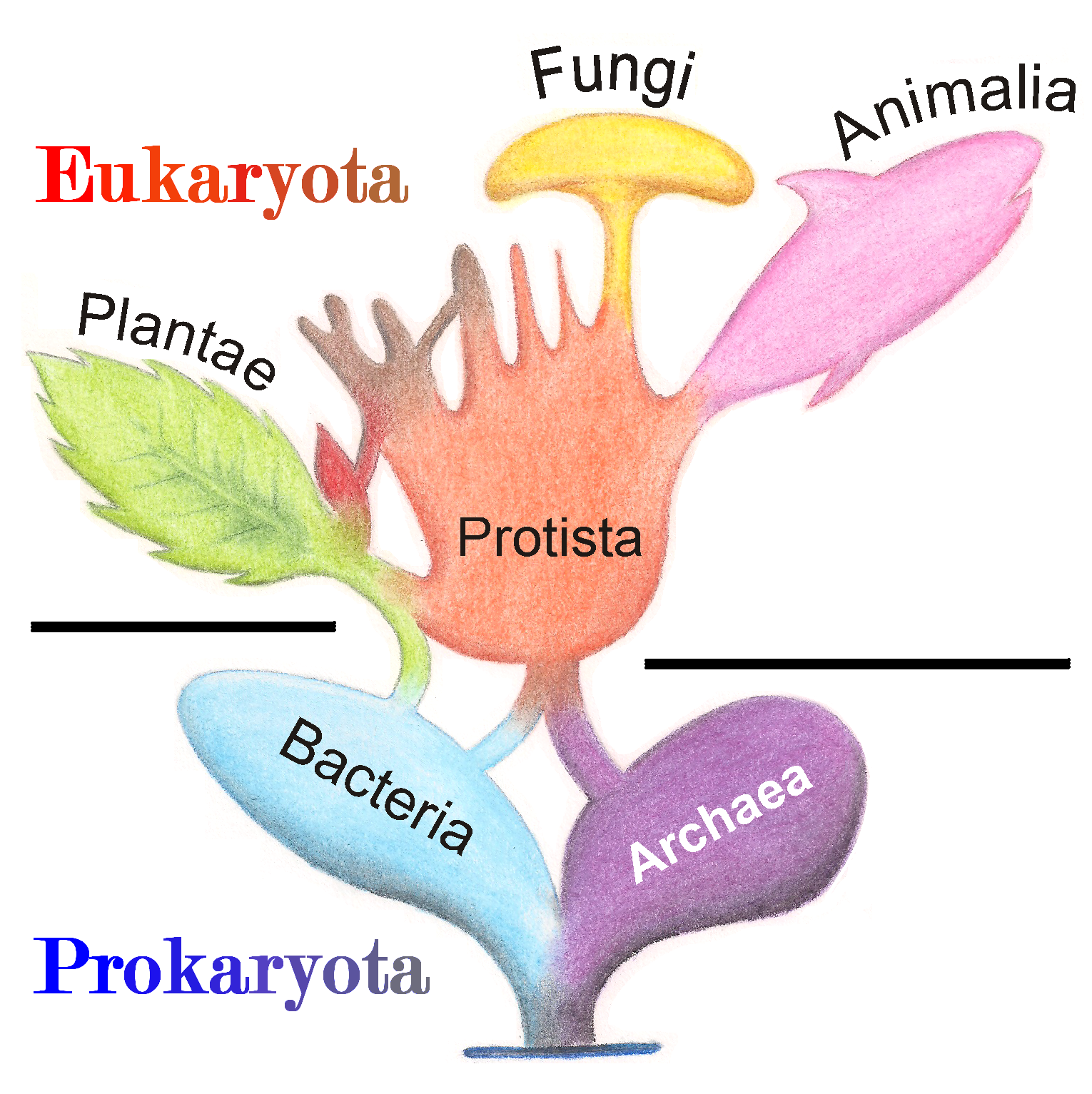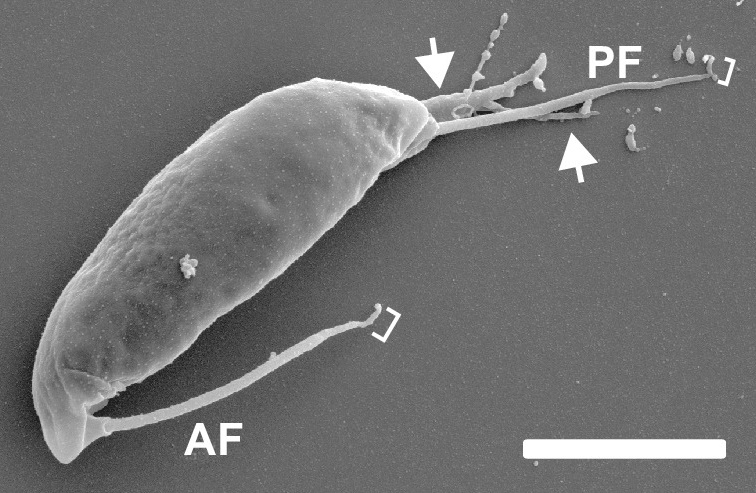|
Heliozoa
Heliozoa, commonly known as sun-animalcules, are microbial eukaryotes (protists) with stiff arms (Pseudopodia#Morphology, axopodia) radiating from their spherical bodies, which are responsible for their common name. The axopodia are microtubule-supported projections from the amoeboid cell body, and are variously used for capturing food, sensation, movement, and attachment. They are similar to Radiolaria, but they are distinguished from them by lacking central capsules and other complex skeletal elements, although some produce simple scales and spines. They may be found in both freshwater and marine biology, marine environments. Classification Originally the heliozoa were treated together as a formal taxon Heliozoa or Heliozoea, with the rank of class or phylum, but it has been realised that they are polyphyletic, as the various orders show notable differences and are no longer believed to be descended from a single common ancestor. Instead, "heliozoa" is regarded as a descriptive ... [...More Info...] [...Related Items...] OR: [Wikipedia] [Google] [Baidu] |
Protists
A protist ( ) or protoctist is any Eukaryote, eukaryotic organism that is not an animal, Embryophyte, land plant, or fungus. Protists do not form a Clade, natural group, or clade, but are a Paraphyly, paraphyletic grouping of all descendants of the last eukaryotic common ancestor excluding land plants, animals, and fungi. Protists were historically regarded as a separate taxonomic rank, taxonomic kingdom (biology), kingdom known as Protista or Protoctista. With the advent of phylogenetic analysis and electron microscopy studies, the use of Protista as a formal taxon was gradually abandoned. In modern classifications, protists are spread across several eukaryotic clades called supergroup (biology), supergroups, such as Archaeplastida (photoautotrophs that includes land plants), SAR supergroup, SAR, Obazoa (which includes fungi and animals), Amoebozoa and "Excavata". Protists represent an extremely large genetic diversity, genetic and ecological diversity in all environments, in ... [...More Info...] [...Related Items...] OR: [Wikipedia] [Google] [Baidu] |
Actinophryida
The actinophryids are an order of heliozoa, a polyphyletic array of stramenopiles, having a close relationship with pedinellids and ''Ciliophrys''. They are common in fresh water and occasionally found in marine and soil habitats. Actinophryids are unicellular and roughly spherical in shape, with many axopodia that radiate outward from the cell body. Axopodia are a type of pseudopodia that are supported by hundreds of microtubules arranged in interlocking spirals and forming a needle-like internal structure or axoneme. Small granules, extrusomes, that lie under the membrane of the body and axopodia capture flagellates, ciliates and small metazoa that make contact with the arms. Description Actinophryids are largely aquatic protozoa with a spherical cell body and many needle-like axopodia. They resemble the shape of a sun due to this structure, which is the inspiration for their common name: heliozoa, or "sun-animalcules". Their bodies, without arms, range in size from a few tens ... [...More Info...] [...Related Items...] OR: [Wikipedia] [Google] [Baidu] |
Heliozoan Feeding DSC 1665
Heliozoa, commonly known as sun-animalcules, are microbial eukaryotes (protists) with stiff arms (axopodia) radiating from their spherical bodies, which are responsible for their common name. The axopodia are microtubule-supported projections from the amoeboid cell body, and are variously used for capturing food, sensation, movement, and attachment. They are similar to Radiolaria, but they are distinguished from them by lacking central capsules and other complex skeletal elements, although some produce simple scales and spines. They may be found in both freshwater and marine environments. Classification Originally the heliozoa were treated together as a formal taxon Heliozoa or Heliozoea, with the rank of class or phylum, but it has been realised that they are polyphyletic, as the various orders show notable differences and are no longer believed to be descended from a single common ancestor. Instead, "heliozoa" is regarded as a descriptive term applying to various lines of prot ... [...More Info...] [...Related Items...] OR: [Wikipedia] [Google] [Baidu] |
Centrohelea
The centrohelids or centroheliozoa are a large group of heliozoan protists. They include both mobile and sessile forms, found in freshwater and marine environments, especially at some depth. Characteristics Individuals are unicellular and spherical, usually around 30–80 μm in diameter, and covered with long radial axopods, narrow cellular projections that capture food and allow mobile forms to move about. A few genera have no cell covering, but most have a gelatinous coat holding scales and spines, produced in special deposition vesicles. These may be organic or siliceous and come in various shapes and sizes. For instance, in ''Raphidiophrys'' the coat extends along the bases of the axopods, covering them with curved spicules that give them a pine-treeish look, and in ''Raphidiocystis'' there are both short cup-shaped spicules and long tubular spicules that are only a little shorter than the axopods. Some other common genera include ''Heterophrys'', ''Actinocystis'', and ' ... [...More Info...] [...Related Items...] OR: [Wikipedia] [Google] [Baidu] |
Pedinellid
Pedinellales ( ICN) or Pedinellida (ICZN) is a group of single-celled algae found in both marine environments and freshwater. These are found in both freshwater and marine environments, and most genera are sessile, attached by posterior stalks. The flagellum is at the anterior of the cell, and the tentacles surround it, often capturing small prey drawn in by its current. The colored genera are '' Pedinella'', '' Apedinella'', '' Pseudopedinella'', and '' Mesopedinella''. Several more genera have lost their chloroplasts and feed entirely by phagocytosis. These are '' Parapedinella'', '' Actinomonas'', and '' Pteridomonas''. It also appears that certain heliozoa are actually derived pedinellids. ''Ciliophrys'' alternates between a mobile flagellate stage and a heliozoan feeding stage, where the body is contracted with extended axopods all over its surface, and the flagellum is curled up into a tight figure eight. The actinophryids, ''Actinophrys'' and ''Actinosphaerium'', exi ... [...More Info...] [...Related Items...] OR: [Wikipedia] [Google] [Baidu] |
Amoeboid
An amoeba (; less commonly spelled ameba or amœba; : amoebas (less commonly, amebas) or amoebae (amebae) ), often called an amoeboid, is a type of cell or unicellular organism with the ability to alter its shape, primarily by extending and retracting pseudopods. Amoebae do not form a single taxonomic group; instead, they are found in every major lineage of eukaryotic organisms. Amoeboid cells occur not only among the protozoa, but also in fungi, algae, and animals. Microbiologists often use the terms "amoeboid" and "amoeba" interchangeably for any organism that exhibits amoeboid movement. In older classification systems, most amoebae were placed in the class or subphylum Sarcodina, a grouping of single-celled organisms that possess pseudopods or move by protoplasmic flow. However, molecular phylogenetic studies have shown that Sarcodina is not a monophyletic group whose members share common descent. Consequently, amoeboid organisms are no longer classified together in ... [...More Info...] [...Related Items...] OR: [Wikipedia] [Google] [Baidu] |
Haptista
Haptista is a proposed group of protists made up of centrohelids and haptophytes. Phylogenomic studies indicate that Haptista, together with ''Ancoracysta twista'', forms a sister clade to the SAR supergroup#Internal phylogeny, TSAR Supergroup (biology), supergroup, but it may also be sister to the Cryptista (+Archaeplastida). It is thus one of the earliest diverging Diaphoretickes. Taxonomy Based on studies done by Cavalier-Smith, Chao & Lewis 2015 and Ruggiero et al. 2015. * Subphylum Centroheliozoa Cushman & Jarvis 1929 sensu Durrschmidt & Patterson 1987 [Heliozoa Haeckel 1862 stat. n. Margulis 1974 em. Cavalier-Smith 2003] ** Class Centrohelea Kuhn 1926 stat. n. Cavalier-Smith 1993 [Centroplastiales; Centrohelina Hartmann 1913; Centroplasthelida Febvre-Chevalier 1984] * Subphylum Haptophyte, Haptophytina Cavalier-Smith 2015 (Haptophyta Hibberd 1976 sensu Ruggerio et al. 2015) ** Clade Rappemonada Kim et al. 2011 *** Class Rappephyceae Cavalier-Smith 2015 ** Clade Haptomonada ( ... [...More Info...] [...Related Items...] OR: [Wikipedia] [Google] [Baidu] |
Rotosphaerida
The nucleariids, or nucleariid amoebae, are a group of amoebae that compose the sister clade of the fungi. Together, they form the clade Holomycota. They are aquatic organisms found in freshwater and marine habitats, as well as in faeces. They are free-living phagotrophic predators that mostly consume algae and bacteria. Nucleariids are characterized by simple, spherical or flattened single-celled bodies with filopodia (fine, thread-like pseudopods), covered by a mucous coat. They lack flagella and microtubules. Inside the cytoplasm of some species are endosymbiotic proteobacteria. Some species are naked, with only the mucous coat as cover, while others (known as 'scaled' nucleariids) have silica-based or exogenous particles of various shapes. An exceptional nucleariid, ''Fonticula alba'', develops multicellular fruting bodies (sorocarps) for spore dispersal. It is one of several cases of independently evolved multicellularity within Opisthokonta, the clade that houses both Ho ... [...More Info...] [...Related Items...] OR: [Wikipedia] [Google] [Baidu] |
Stramenopiles
The stramenopiles, also called heterokonts, are Protist, protists distinguished by the presence of stiff tripartite external hairs. In most species, the hairs are attached to flagella, in some they are attached to other areas of the cellular surface, and in some they have been secondarily lost (in which case relatedness to stramenopile ancestors is evident from other shared cytological features or from genetic similarity). Stramenopiles represent one of the three major clades in the SAR supergroup, SAR Supergroup (biology), supergroup, along with Alveolate, Alveolata and Rhizaria. Stramenopiles are Eukaryote, eukaryotes; most are single-celled, but some are multicellular including some large seaweeds, the brown algae. The group includes a variety of algal protists, heterotrophic flagellates, opalines and closely related proteromonad flagellates (all Endosymbiont, endobionts in other organisms); the actinophryid Heliozoa, and oomycetes. The tripartite hairs characteristic of the ... [...More Info...] [...Related Items...] OR: [Wikipedia] [Google] [Baidu] |
Nucleariida
The nucleariids, or nucleariid amoebae, are a group of amoebae that compose the sister clade of the fungi. Together, they form the clade Holomycota. They are aquatic organisms found in freshwater and marine habitats, as well as in faeces. They are free-living phagotrophic predators that mostly consume algae and bacteria. Nucleariids are characterized by simple, spherical or flattened single-celled bodies with filopodia (fine, thread-like pseudopods), covered by a mucous coat. They lack flagella and microtubules. Inside the cytoplasm of some species are endosymbiotic proteobacteria. Some species are naked, with only the mucous coat as cover, while others (known as 'scaled' nucleariids) have silica-based or exogenous particles of various shapes. An exceptional nucleariid, ''Fonticula alba'', develops multicellular fruting bodies (sorocarps) for spore dispersal. It is one of several cases of independently evolved multicellularity within Opisthokonta, the clade that houses both Holo ... [...More Info...] [...Related Items...] OR: [Wikipedia] [Google] [Baidu] |
Nucleariid
The nucleariids, or nucleariid amoebae, are a group of amoebae that compose the sister clade of the fungi. Together, they form the clade Holomycota. They are aquatic organisms found in freshwater and marine habitats, as well as in faeces. They are free-living phagotrophic predators that mostly consume algae and bacteria. Nucleariids are characterized by simple, spherical or flattened single-celled bodies with filopodia (fine, thread-like pseudopods), covered by a mucous coat. They lack flagella and microtubules. Inside the cytoplasm of some species are endosymbiotic proteobacteria. Some species are naked, with only the mucous coat as cover, while others (known as 'scaled' nucleariids) have silica-based or exogenous particles of various shapes. An exceptional nucleariid, '' Fonticula alba'', develops multicellular fruting bodies (sorocarps) for spore dispersal. It is one of several cases of independently evolved multicellularity within Opisthokonta, the clade that houses both ... [...More Info...] [...Related Items...] OR: [Wikipedia] [Google] [Baidu] |








